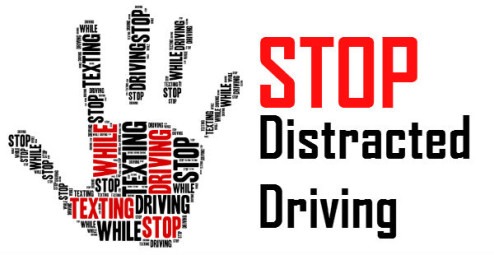
April is Distracted Driving Awareness Month
Driving distraction is one of the leading causes of traffic incidents, using a cellular device while driving contributes to a lot of these incidents. Here are a few more common examples of distracted driving:
- Eating/Drinking/Smoking
- Reading (including looking at a map, book, etc.)
- Applying makeup, shaving, brushing teeth, etc.
- Adjusting radio/cassette/CD/MP3, DVD players, climate, or other controls
- Watching a person, object or event outside the vehicle
- Moving objects in the vehicle (devices, food containers, insects, etc.)
- Talking with other people, especially if the driver turns to those in the back seat of the car
- Using CB radio or other communication devices
- In-vehicle navigation systems (GPS systems, etc.)
Something’s you can do to prevent any incidents from happening while your behind the wheel would be first and foremost Pay Attention. A few other things would be:
- Stow belongings properly.
- Adjust seat, mirrors, steering wheel, climate controls, etc.
- Select a radio station or have the music device ready.
- Plan your route, check the map or read the directions.
- Avoid using the phone or device.
- Have a voice mail option and allow it to pick up messages.
- Pull over to a safe location to make or take the call. Pull out of the flow of traffic especially when on a major highway (do not stop on the shoulder). Tell your caller you will phone them back after you have parked.
- Have a passenger answer or place the call.
- Use a hands free device when using the phone (e.g., voice activation, single touch) but remember the activation process and conversation itself is still a distraction.
- Make sure other devices are mounted (not moving around) while driving.
- Pre-program commonly used numbers.
